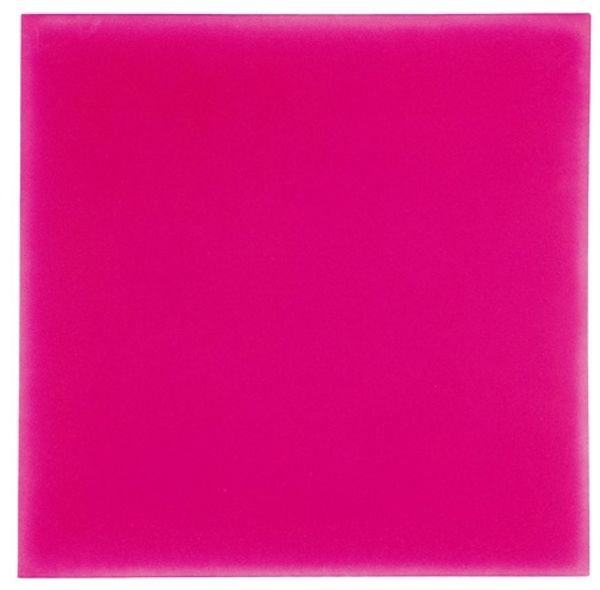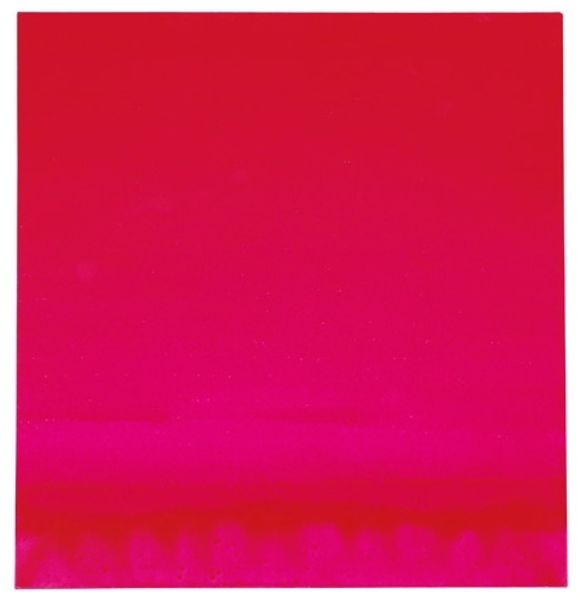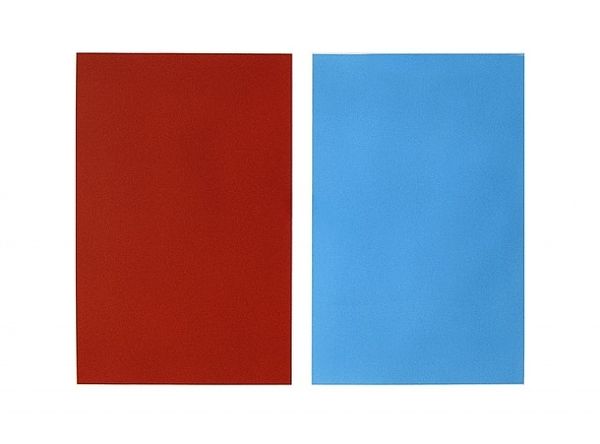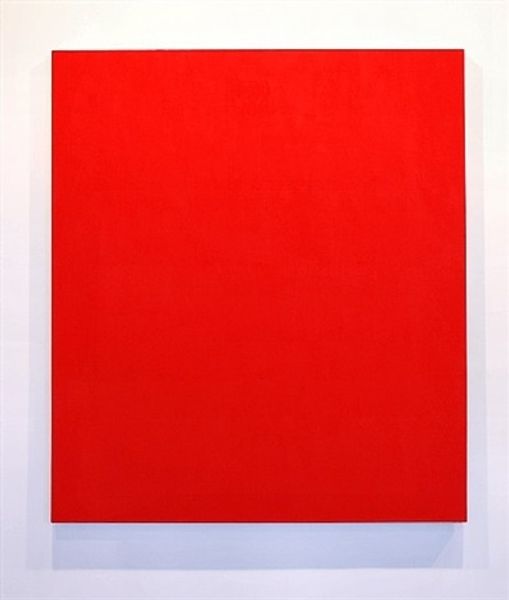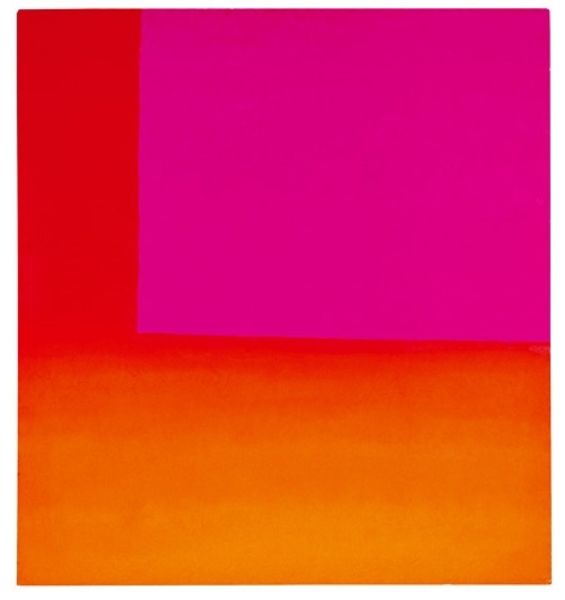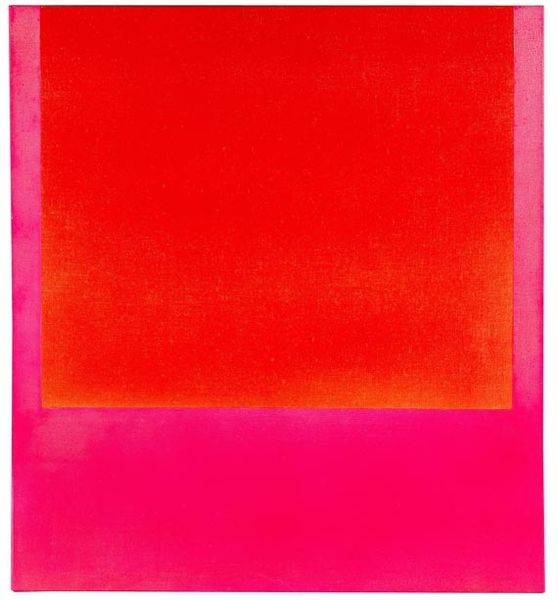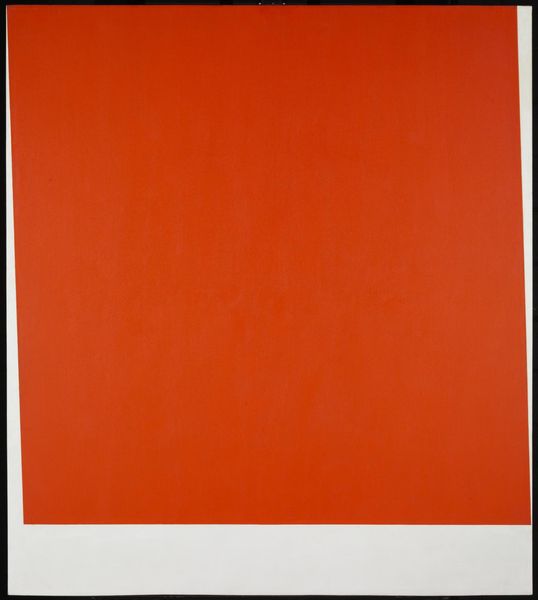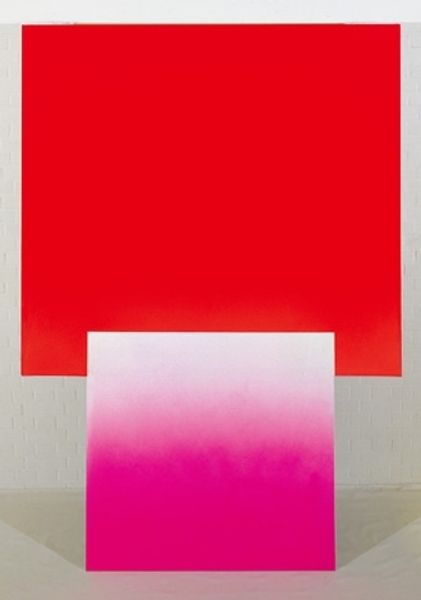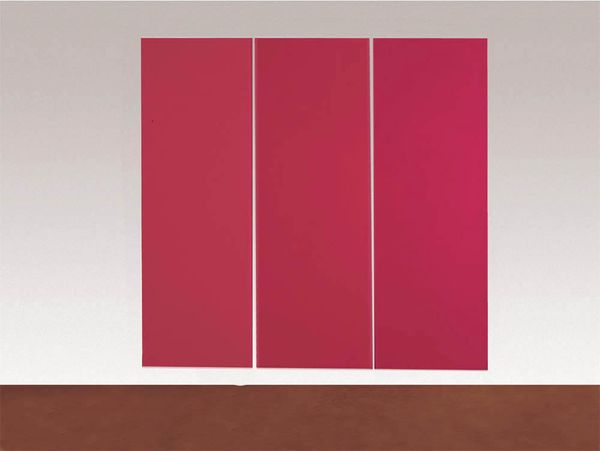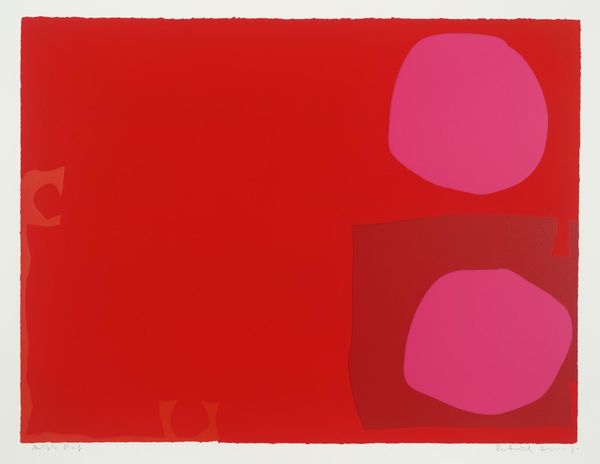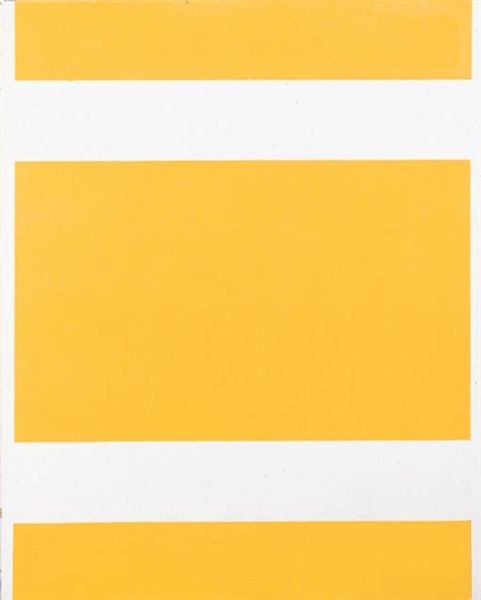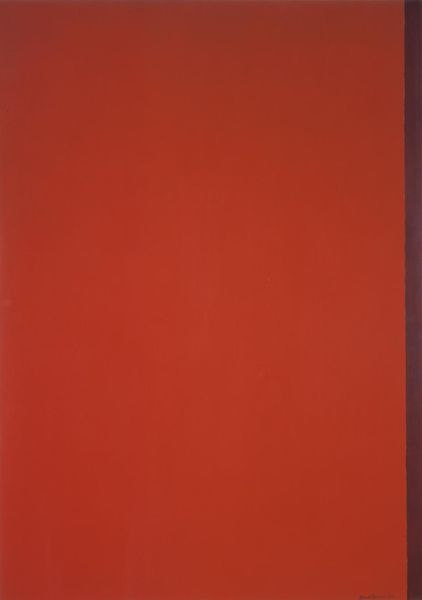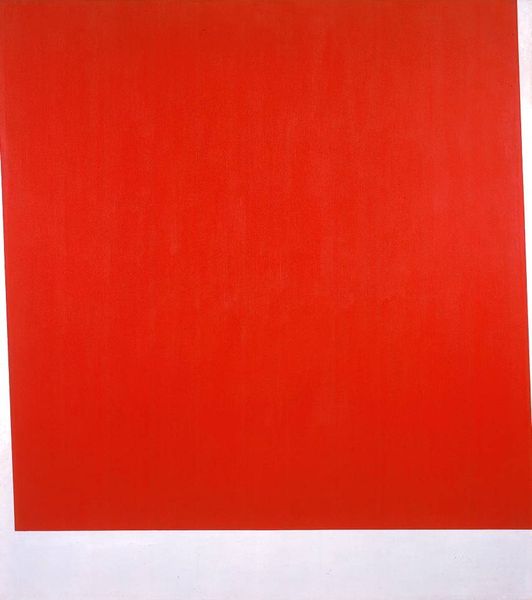
acrylic-paint
#
abstract expressionism
#
acrylic-paint
#
geometric pattern
#
abstract pattern
#
abstraction
#
modernism
Copyright: Rupprecht Geiger,Fair Use
Curator: This is Rupprecht Geiger's "675/73 (Sequenz Kalt Warm – Portrait der Farbe Cerise)," created in 1973. It utilizes acrylic paint to explore the dynamic interplay of color. What's your initial take? Editor: Bold and immediately striking. The chromatic intensity is undeniable, but the format seems almost deliberately simple—two blocks of pure, unmodulated color facing off. Curator: Geiger's practice largely involved such reduction; he wanted to strip color of representational function. He used industrial acrylics to achieve those strikingly even surfaces. Think of the shift in the art world, embracing these synthetically manufactured paints! Editor: Absolutely. But what interests me is the tension within that reduction. Look at how the artist contrasts the colors: cerise, with its magenta undertones, against the solid red. A clear, forceful dichotomy. Curator: Indeed, it evokes the sensation implied in the subtitle, "Cold Warm". Consider the historical moment; this work was made in West Germany. How might those stark color fields play into feelings of postwar recovery or burgeoning consumerism? The intense color fields feel designed to capture and reflect the social mood. Editor: You raise a crucial point about postwar influences and mass consumption. While I concur, I remain fixated on the pure optics. The juxtaposition encourages the eye to calibrate differences—each color gaining relative strength by being paired with the other. What would each panel become if divorced from this arrangement? Curator: Without context, the panels arguably become décor—mere chromatic exercises, devoid of deeper significance. The political landscape, the social fabric: these infuse Geiger's canvases with substantial resonance. The colors become like flags, representing feeling rather than anything specific. Editor: Still, Geiger's composition asks us to focus on the nature of color itself. Its capacity to vibrate, recede, and dominate solely through chromatic interactions—politics notwithstanding. Curator: I believe it asks us to see both, the subjective *and* the social life, of those acrylics, because the historical and the purely aesthetic need to work together in ways that enrich one another. Editor: An idea well worth pondering after viewing it.
Comments
No comments
Be the first to comment and join the conversation on the ultimate creative platform.
